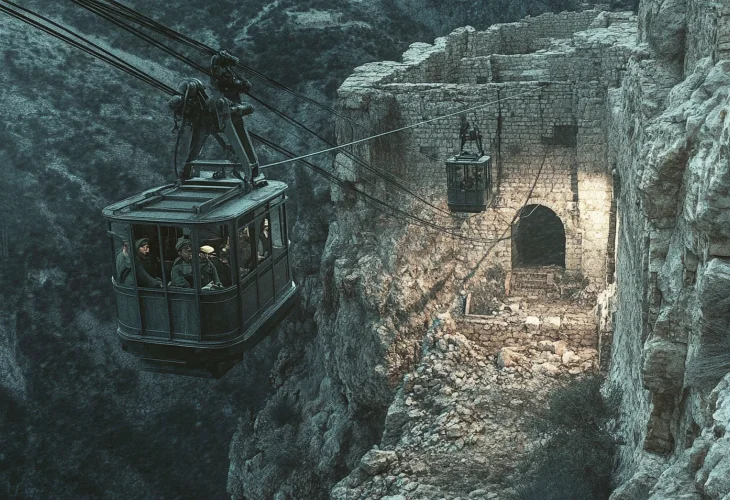History and Archaeology
The Hidden Cable Car of King David’s Tomb
In 1948, a secret cable car kept Jerusalem’s defenders connected while hidden from Jordanian fire

You may have visited the cable cars at Mount Hermon, Masada, or Rosh Hanikra. But there was another cable car in Israel that few people knew about. It crossed the Valley of Hinnom from Mount Zion to Mishkenot Sha’ananim, hidden from the eyes of the world.
In the spring of 1948, during Israel’s War of Independence, Palmach fighters took position on Mount Zion near the Old City. They planned an attack to capture the Old City from the Jordanians. The attempt failed, and Jewish residents of the Old City were taken captive by the Jordanians, leading to a ceasefire. Mount Zion remained in Israeli hands, while the rest of the Old City stayed under Jordanian control. Jews often came to visit King David’s Tomb, from where they could see the Temple Mount and the Kotel (Western Wall) but only from a distance.
Across from Mount Zion, on the other side of the Valley of Hinnom, were the Jewish neighborhoods of Mishkenot Sha’ananim and Yemin Moshe. They were under Jewish control but separated by the deep valley, which was extremely dangerous to cross. Any attempt to do so was met with heavy Jordanian gunfire. The IDF dug a long trench to cross the valley in safety, but traveling through it took hours, especially when moving the wounded or carrying ammunition.
To solve this, Uriel Hefetz, an experienced engineer, came up with an ingenious idea, a 50-meter-high cable car connecting a building near King David’s Tomb to the ophthalmology hospital in Mishkenot Sha’ananim. The cable car could carry up to 250 kilograms and was operated by three soldiers on each side. Heavy loads could be moved in just two minutes.
What made this cable car truly unique was its collapsible design. If the Jordanians spotted it, they would open fire immediately. So it was built so that the cable could be quickly dismantled and laid flat on the bottom of the valley. It was only operated at night and without lights. At night, soldiers stretched the cable, transferred the car across, and then took it apart and hid it on the ground.
For months, IDF soldiers used this secret lifeline to keep the two sides connected. Eventually, other ways to cross were found, and the cable car was no longer used regularly, but it remained ready for emergencies. The entire project was kept a secret, even after the Six-Day War in 1967, when Jerusalem was united again. Since the future of East Jerusalem was still uncertain, the cable car’s existence stayed classified. Only in 1972, five years after the war, was the secret finally revealed.
Today, there is a museum dedicated to the cable car’s story in the very room from which it once departed, now part of the Mount Zion Hotel — the former ophthalmology hospital. Beside it is a hanging bridge that crosses the Valley of Hinnom, offering breathtaking views. It is the longest suspension bridge in Israel. And soon, a new cable car is planned from the old railway station to Mount Zion, making it easier for pilgrims to reach the Temple Mount during holidays and busy times.

